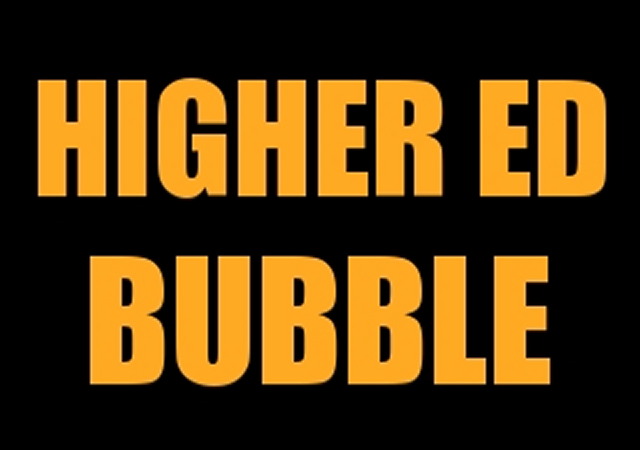New Report Indicates College Enrollment is on a Downward Trend
“The largest declines of all are in first-year students.”

Higher education is already feeling a lot of pain because of the pandemic, but it’s going to get worse.
Inside Higher Ed reports:
Report: Enrollment Continues to Trend Downward
The National Student Clearinghouse Research Center has bad news. Again.
Its latest fall 2020 enrollment report continues to show downward trajectories nearly across the board in higher education. As of Sept. 24, undergraduate enrollment is now 4 percent lower than it was last fall — a 1.5-percentage-point decrease from earlier this semester.
This latest report includes data from more colleges. It’s based on reporting from about 54 percent of postsecondary institutions, or data for 9.2 million students, compared to 22 percent of institutions earlier this fall. The next update is scheduled for Nov. 12.
The largest declines of all are in first-year students. Just over 16 percent fewer freshmen have enrolled this fall compared to last year. Graduate enrollment was trending upward earlier. While it’s still an increase over last year, that gain has slipped by 1.3 percentage points.
“For the most part, things are worse by almost half,” said Douglas Shapiro, executive director of the clearinghouse. “But we really don’t have a way to know whether that is likely to continue.”
Somewhat surprisingly, public and private nonprofit four-year institutions are doing relatively well, he said during a webinar presenting the report.
 DONATE
DONATE
Donations tax deductible
to the full extent allowed by law.









Comments
Maybe, at least in some cases, the white males know their employment prospects are low at many firms because they are white and male. None of the Indian- or Other-Asian-headed startups will hire them because they only hire their own.
A friend’s grandson sorely disappointed his mother by doing a stint in the Army, learning diesel engine maintenance and repair. He came out, used his college benefits for trade school, and eventually opened his own shop. Land Rover, Mini, BMW, Audi, and Mercedes.
“Mom, someone has to keep Apu’s and Chung’s cars maintained and running, and I rake in a tidy sum doing it. And, I own the business.”
“because they are white and male” and expensive.
I suspect white salary expectations are what’s driving the minimal employment prospects for whites.
Cheap labor reigns no matter what the type.
Yeah, blame it on the pandemic, errrrrrr, yeah, that’s the ticket.
Don’t blame it on all the Mental Vacuum Studies majors, the replacement of Rush Week with Mandatory Struggle Sessions, and the Leftist Loyalty Oaths required by every professor.
I wonder how many of these students are the highly profitable international and out of state students?
Why pay big money and not get a real inclusive college experience when you are learning on line or locked in your dorm room.
Interesting data set, but we will need more time to determine what the long-term trend will be. This year’s numbers are, I suspect, very exaggerated by the impacts of Covid. Because so many schools have gone to an online platform (and done so very poorly), many prospective freshman have taken gap years and others (I suspect more than usual) have withdrawn mid-semester. Based upon the comments I am seeing on parent forums, the perception is that students and parents aren’t getting value for their money. It will be interesting to see what next semester’s enrollment looks like, if that data is released.
Amid all the commentary about the declining quality of the incoming freshman class, it looks like some are smart enough to get a job and earn hard money after high school. Likewise for enlisting in the military and learning some useful skills and a more mature attitude to use going into adulthood – genuine adulthood rather than advanced infancy. My decision to enlist in the Air Force in the late sixties was probably the best decision I ever made.
.
There are multiple reasons that enrollment might go down.
One is COVID (Wuhan Flu) and frustration with online learning.
Others might be some students might need to take a gap year and work if their parents were laid off during the pandemic, to help the family.
Some mentioned non-college work paths, like the armed forces and/or trades.
The article does not correlate the data with birth rates from 18 years ago. We know birth rates declined around 18-25 years ago (that is a guestimate – i don’t know the exact figures), and we have not hit the nadir yet.
There are fewer possible students and colleges are fishing in the lake with less fish each year.
I suspect this is a best case scenario and that the schools who are really screwed at the moment aren’t even letting that data see the light of day. Oberlin went to 3 terms of 2000 students vs 2 terms of 3000 students for the academic year. I predicted numbers of 1800, 1500, and 1300 for the three terms. Will be interesting to see how close I was by the end of next summer.